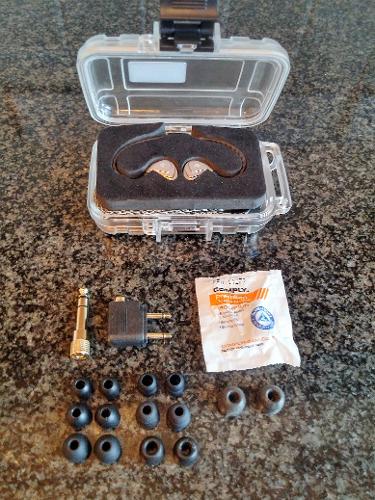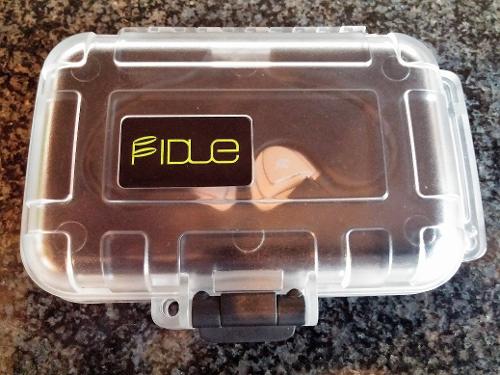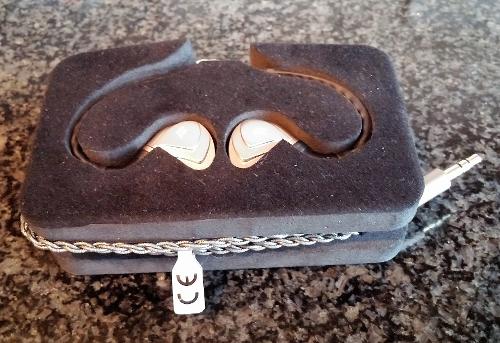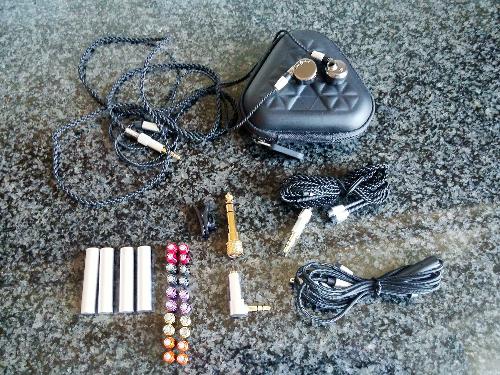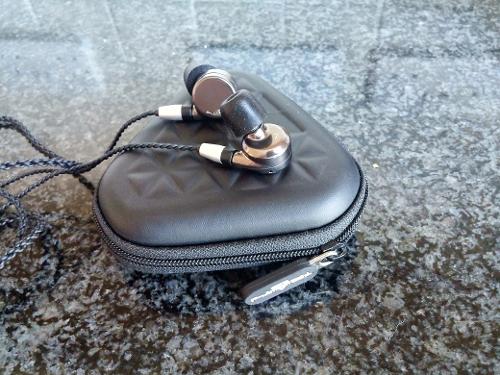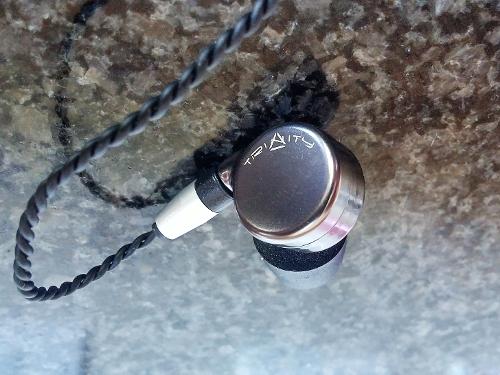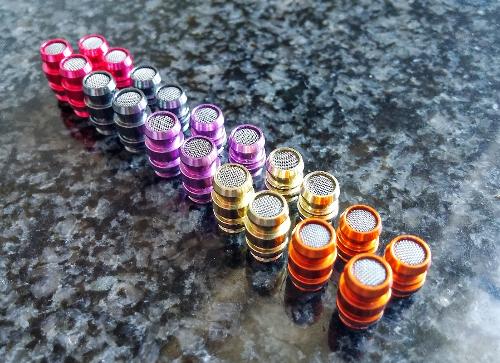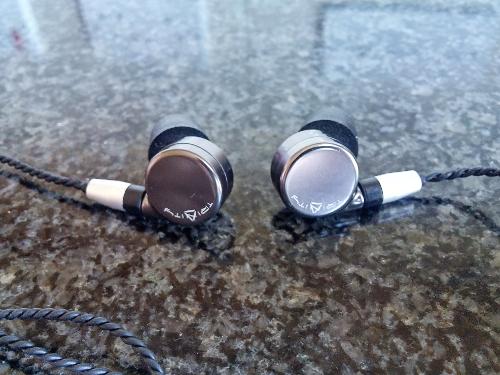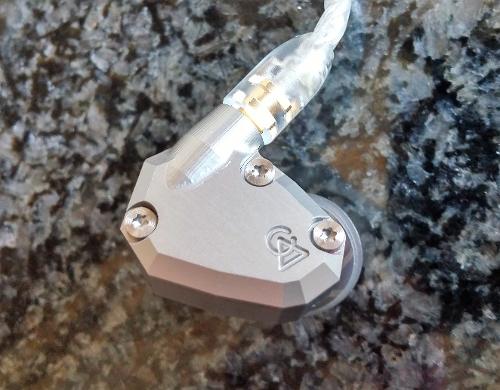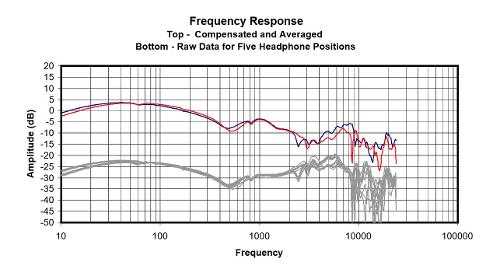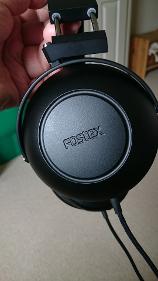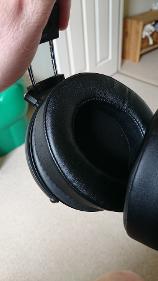
Vibro Labs Maya (universal) – initial impressions
In my travels on Head-Fi over the last year or so, Vibro Labs is a name I had heard bandied around in various forums, mainly as makers of the Vibro Veritas IEM measuring system, or due to their work with Zach Meyerbach and his ZMF brand on the highly rated ZMF x Vibro line of modded Fostex planar headphones. On looking a little deeper, it turns out that Vibro Labs is actually the brainchild of Luke Pighetti, who to all intents IS Vibro. Reading more about the firm on their excellent website led me to a few threads and reviews regarding their first ever IEM (the Aria), with people praising the unusual tuning and CIEM-style build, among other things. About the same time I started hearing about the first model, an opportunity came up to participate in a European tour of Vibro’s sophomore offering, the Maya. I have already written up my review of the Aria, and this is my impression of the “big brother” of the Vibro lineup. For those who have read the previous effort, there will be some similarities as the IEMs are essentially the same from a design and ergonomic standpoint, so you might want to just jump ahead to the sound descriptions. This review is based on the two week period I got to spend with the Maya as part of the UK tour before sending them on to the next lucky recipient.
About me: newly minted audiophile, late 30s, long time music fan and aspiring to be a reasonably inept drummer. Listen to at least 2 hours of music a day on my commute to work – prefer IEMs for out and about, and a large pair of headphones when I have the house to myself and a glass in my hand. Recently started converting my library to FLAC and 320kbps MP3, and do most of my other listening through Spotify or Tidal HiFi. I am a fan of rock, acoustic (apart from folk) and sarcasm. Oh yeah, and a small amount of electronica. Not a basshead, but I do love a sound with some body to it. Please take all views expressed below with a pinch of salt – all my reviews are a work in progress based on my own perceptions and personal preferences, and your own ears may tell you a different story.

Tech specs (from the Vibro website)
Faceplate – California Buckeye
Shells – Smoke SLA
Frequency range – 20Hz to 20kHz+ *
Impedance – 12 Ohms
Sensitivity – 114 dB/mw
*the tweeters in use on the Maya have been confirmed by Luke @ Vibro as technically going up to to 40kHz, but as no-one but Knowles (who build them) can verify measurements that high, Vibro has stuck to thr “20+” designation

Unboxing
Like the other model in theoir IEM lineup (the Aria), the unboxing for the Vibro is pretty simple – the IEMs arrive in an “exhibition” Peli case sporting the Vibro Labs logo, with an additional pocket friendly semi-hard case for day to day use (not included in the tour package). As the tour gear arrived in a cardboard box, I am not aware if there is an official Vibro “box”, but given the minimalist packaging aesthetic of the Aria, I imagine the Maya follows in the same vein. The Peli case is clear, coming in a standard 1010 size, with the only visible adornment being a black Vibro labs sticker on the lid. The usual Peli zigzag hard foam cushioning is present inside, with the IEMs, cable and cleaning tool all held firmly in place in a laser-cut velour insert which is custom cut to completely fill out the inside of the case. The insert is perfect for transporting the IEMs in safety (if you don’t mind disassembling them first, but doesn’t actually allow for any more accessories to be lugged around in the case as well unless you want to take a scalpel to the foam to carve out some extra space. Like the Aria model, the warranty card is actually hand written on the inside of the case itself (facing out of the bottom panel) – this lists the model name, serial number and who it was made for, and allows you to keep the important warranty detail for their impressive 2 year warranty handy in case of emergency. In terms of accessories, the Maya comes with two sets of Comply foam tip triple packs (T-600 size, both the normal fit and the more spherical “comfort” tip), a cleaning tool and a braided CIEM style 2 pin braided cable. The accessory loadout isn’t particularly huge, but two working cases (one for day to day carry, one if you need your gear to survive a nuclear war), six sets of tips and a decent braided cable are certainly nothing to balk at.

Build quality and ergonomics
** As the Maya and the Aria are based on the same outer shell, the below section is copied from my previous Aria review with a few minor adjustments – please skip on if you have already read the previous review **
There is plenty of information on the Vibro Labs website (www.vibrolabs.com) on the manufacturing process and materials used in these IEMs, so I won’t go into massive detail here – the body of the IEM is made out of a transparent acrylic, with an exotic hardwood faceplate on the outer face. The faceplate is devoid of any branding, and currently comes in Buckeye wood, with the option of selecting a “masterwork” for additional outlay, which will be something slightly more unique. The main body of the IEM is 3D printed, and holds a similar ergonomic shape to many high-driver count universal IEMs like the current Noble series. As the shells are see-through, the internal wiring and driver mechanism can be seen clearly – there is plenty of space left in the bottom half of the shell, so I suspect that Vibro could release a higher driver count IEM at some stage without too much major rework on the housing (if they were so inclined).
The quality of the build is excellent, with the 3D printed shells feeling smooth and blemish free, with a slightly mottled look when held directly to the light due to the peculiarities of the manufacturing process. They are very smooth and well finished, with the inner face containing the only conspicuous attempt at branding, with an engraved “Vibro” logo in white across the top part of the shell. In comparison to the smoky shells of the Aria, the shells on the tour version of the Maya are more or less clear – after a messaging exchange with Luke @ Vibro, he has confirmed that the Maya shells will indeed be “smokier” in the production versions, as the demo model came from a lighter production run. The wooden faceplate also deserves special mention, blending seamlessly into the main body of the IEM and providing a fantastic and unusual look when worn. The wood itself is beautifully worked and polished to a high shine.
In terms of fit and ergonomics, the Maya fit very well in my larger-than-average ear canals – this is quite fortunate, as the sound bore of the IEM is one of the wider I have used, taking a set of Comply T-600s quite easily. That being said, I was easily able to get a very good seal with both ears, and once in, the shape of the shells kept the outer of the IEM around level with the outer part of my ear, so still felt pretty comfortable to wear for extended periods. For those with smaller ears, it may be more of a challenge to get a perfect fit, but Comply tips should help all but the most unspacious of eardrums get a good seal. I would venture a guess that these won’t be the best IEMs to try sleeping in, but at the pricetag involved, I wouldn’t imagine most people would risk wearing them to bed anyway. It is worth noting that my girlfriend has exceptionally small and shallow ear canals, and she wasn’t able to achieve a comfortable fit, but she also struggles with a few of my other IEMs, so not a major concern,

Sound quality
Test gear:
LG G5 (with HiFi Plus 32-bit Sabre DAC add-on)
Hifiman Supermini
Cowon Plenue D
Microsoft Surface Pro 2 (straight from the output jack)
Test tracks (mainly 320kbps MP3 or FLAC/Tidal HiFi):
Nathaniel Rateliff & The Night Sweats – S.O.B. / Wasting Time
Blackberry Smoke – The Whipporwill (album)
Slash – Shadow Life / Bad Rain (my reference tracks for bass impact and attack, guitar “crunch”)
Otis Redding – Sitting On The Dock Of The Bay (vocal tone)
Sister Hazel – Hello, It’s Me (bass tone)
Chris Stapleton – Whiskey And You
Elvis – various
Leon Bridges – Coming Home (album)
Foy Vance – The Wild Swan
Daft Punk – Random Access Memories (album)
Rodrigo y Gabriela
Mavis Staples – Livin’ On A High Note
Twin Atlantic – The Great Divide / GLA
The Darkness – Permission To Land
Led Zeppelin - Mothership

General impressions on the sound signature
When I initially heard the Vibro Labs “sound” on the previous model (the Aria), I will admit I took a while to fully wrap my head around it in terms of getting the most enjoyment out of the music. With the benefit of a little brain burn-in under my belt already, the Maya was a much easier IEM to “slip into”, with a far more neutral overall tuning, without any major music emphasis. Luke @ Vibro has stated previous he isn’t a fan of ruler-flat reference tunings, and while the Maya definitely doesn’t have a particular emphasis in any of the sound ranges, the sound is still definitely more on the musical than analytical side of the fence. The Maya sport the sort of tuning that the Focal Spirit Pro has become famed for, with a nice balance across the full range, great extension in both directions but still a dash of music and sparkle in the sound to stop it becoming too “reference” and dull. One of the main talking points for people who didn’t like the previous Vibro labs model (the Aria) was the relative recession of the midrange compared to the bass and treble. This is certainly not the case with the Maya, with the mids being lifted in line with the rest of the sound frequencies to provide a more upfront and engaging vocal presence. Another tweak made by Vibro Labs is to boost the output of the quad-armature setup around the 16kHz – this doesn’t give an audible treble “spike” as this is already higher than most people without perfect ears can hear with any degree of distinction, but it does give a greater feel of “room acoustics” as a result as that is apparently where the brain picks up a lot of locational information from when processing sound. Overall, these IEMs are balanced, highly detailed and sport an air of refinement and excellent imaging that confirms their position as a genuine mid-fi flagship contender.

Highs
The highs are clear and concise, with great extension and a very good sense of space. The tuning has been smoothed out slightly from the previous model, and presents a clean and decently weighted treble all the way up through the range without any obvious spikes or hotspots. The clarity of the notes is very good, with a good feeling of solidity and precision that plants the notes firmly on the soundscape, ringing out with authority and no little energy. There is a slightly airier feel to the stage than the Aria, but it still doesn’t drift too far into ethereal, with good room for the notes to expand but not so much that they get lost in the space.
Starting out with my normal test track for high frequencies, “Starlight” by Slash and Myles Kennedy sails through with flying colours, Kennedy’s soaring vocals pulsating with energy in the higher registers without crossing over into sibilance or cutting too sharply into the audio landscape. The Jimmy Page-esque dissonance of some of the guitar work also passes my listening comfort test, with the notes being clearly defined and sharp but still listenable. Listening to the high notes, you start to hear some of the “room sounds” that the Maya was tuned to bring out in the sound. There seems to be a greater than usual sense of the space around the artist and the instrument being played, furnishing the backdrop with all the usual micro-details like fret-sounds on guitar neck and breath sounds into microphones. In itself, this isn’t unusual for an IEM in this sort of price range, but the difference with the Maya’s presentation is the feeling that you can place each of the sounds in the correct part of the 3D landscape, adding to the feeling that the music is actually being played “in the room” rather than in between your ears.
Going on my usual search for sibilance, Chris Stapleton is next up on the playlist, “Whiskey and You” playing its familiar refrains into my ears with a nice mix of smoothness and emotion, all the while avoiding the fingernails-on-the-chalkboard screech that some gear can turn some of the more “raw” parts of the chorus into with Stapleton’s gravel and bourbon soaked vocals. Switching across to cymbals, the Maya has a nice clear splash to the sound, with a reasonably natural decay and nice emphasis. Nothing too hot or excessive, but it definitely has a presence in the track.
In terms of extension, Luke @ Vibro has confirmed these tweeters can fire way in excess of the human hearing threshold of 20kHz, and I don’t appear to have any music that has pushed these even close to the limit in terms of extension, so I am inclined to listen on that front. Overall, a mature and clear sounding treble tuning, with limitless extension and a great grasp of air and the in-room sound – very well done.

Mids
The mids are the most obvious departure from the previous Vibro Labs IEM “sound”, with the Maya’s neutral tuning brining the vocals and other mid-based instruments into line with the bass and treble, providing a slightly more energetic and crisp sound as a result. The detail presented by the combined bass and treble crossover is excellent, bringing a great sense of realism to vocal performances as you almost hear the reeds moving in the singer’s throat on certain tracks. The detail is well controlled, however, and doesn’t detract from the musical slant on neutrality that the IEM portrays.
Guitar-based music plays very well on the Maya, with heavy riffs coming across with a good sense of energy and speed in driving rock tracks, and singing sweetly in the background on more acoustic numbers. Playing some Led Zeppelin through the Mayas, Jimmy Page’s guitar work on “Nobody’s Fault But Mine” is crisp, energetic and driving, feeling as fresh as the day it was recorded. Other guitar heavy tracks like “Shadow Life” by Slash pour out of the sound bores with a great sense of crunch and definition, chopping the track into small sharp pieces of pure rock vitriol for the listener to digest. As you can probably gather, the Maya has quite an energetic presentation for an ostensibly “neutral” headphone, and this does help most types or rock and metal music to sound really good, bringing my feet to life to tap along to the track I was listening to on more than one occasion. The reasonably solid weight from the treble is also felt in the mids – the sound isn’t thick, but it hits with presence and solidity, pinning the music down nicely around it.
Male and female vocals are portrayed equally, the drivers not playing any favourites, leaving both sounding smooth and emotional at the same time. Keyboard based instruments are portrayed well too, with a realistic timbre and natural sound to the piano notes on both electronica and more laid back acoustic styles of music. In terms of overall tonality, the Maya has a crisp and musically neutral sound – nothing feels overly warm or analytical either, with a punchy emphasis that reminds me slightly of the Focal Spirit Pro in terms of musical neutrality.

Bass
As this is a neutral tuning, the bass isn’t as heavy as its younger sibling the Aria, with a decent weight and presence but nothing excessive. This definitely isn’t a bass-head’s headphone, with the bass sounding punchy and authoritative but remaining firmly in the “just enough” category rather than the “my fillings have just melted due to the vibrations in my head” section. For tracks with a deep and driving bassline, the Maya copes well enough, playing “Hello, It’s Me” by Sister Hazel with a good amount of warmth and substance to the liquid bassline that permeates the song, without raising it above the rest of the soundscape. Switching across to “Bad Rain” by Slash, the texture and growl of the bassline is there in all its glory, but slightly further back and more restrained than usually presented on a more bass-heavy tuning.
Switching over to electronica, and Emile Sande comes through the IEMs with a decent sense of bass rumble, but not quite the presence in the super-low registers that its sibling commands. Kick drums and percussion is snappy and precise, with a wonderful sense of placement to drum head impacts that fleshes out the rhythm section in your head and sits you just in front of the drum stool. Impact is decent for an all-BA setup, but nothing spectacular, and certainly nowhere near as visceral as the bass you can get from a decent dynamic driver. The tradeoff to this lightness of touch is the excellent speed the BA bass exhibits, tunring on a sixpence as the song demands it and making the most convoluted of basslines (think Primus) stand clearly defined in the listener’s ears.
Overall, a satisfying and musical lower end, which retains its place in the soundscape well, doesn’t bleed or colour the sound in the midrange and does what is expected of a neutral tuning. The only area that really stands out is the detail, with the dual woofer setup being able to drag real texture and richness of sound from the lightest of bass notes, the lowered emphasis making the detail stand in prouder relief rather than being drowned out by the pumping mid-bass. Like I mentioned, bass-heads won’t be jumping for joy, but for people who like the bass just how the artist recorded it, the Maya can quite happily oblige.

Soundstage/separation
Much like the Aria, the soundstage is good but not excessive, providing a feeling of playing a little way outside your head (mainly in the horizontal axis). Where it differs from the Aria is in the sense of 3D placement and realism the Maya can portray, with a palpable sense of being in the studio or the room with the musician with some better recorded Hi-Res tracks, with the locational cues ringing out loud and clear in the listener’s mind and providing a very “holographic” style of presentation. Separation and placement is very good, with the quad-BA drivers making light work of keeping the duelling guitars of Rodrigo y Gabriela or the twin guitar attack of Metallica blended together so they sound musical, but separate enough to have served divorce papers on each other when you need to follow one of the individual strands. The detail level the drivers are capable of also help here, with everything feeling crisp and properly defined, occupying its own space in the sonic landscape. This is a very good example of an IEM that just sounds “right” to me in terms of presentation, keeping a musical rather than analytical outlook, but furnishing the listener with enough audio detail to build up a pretty comprehensive picture in their heads at the same time.

Power requirements
At 12 Ohms with 114db sensitivity, the Maya are definitely not a difficult IEM to drive, playing pretty nicely with my LG G5. I have been reviewing a few DAPs while I have been listening to these, and just like their little brother the Aria, I find that cranking the output to high gain where the DAP used has that option (or in the case of the Hifiman Supermini, just plugging it in to the minute powerhouse) gives the sound a little boost in terms of dynamics. I have no scientific basis to prove this theory, but for me, a little more juice renders much nicer overall results with this IEM.

Comparisons
Vibro Labs Aria – This is the first IEM model that was produced by Vibro Labs, and now sits behind the Maya in their “pecking order”, with a $200 price differential. In terms of build, the IEMs look almost identical, with the Maya having a different wood faceplate and a transparent rather than smoky 3D printed shell. The ergonomics, fit and build are otherwise identical. The main differences in the Aria when comparing them to the Maya is the tuning, with the Aria having a more “U-shaped” sound, with more emphasis on the low bass frequencies and high treble, leaving the mids sitting further back in the soundscape compared to the flatness and more forward mids of the Maya. The Maya sound a little more energetic than the Aria, with similar punch in the bass but lower quantity and a greater vocal presence, with the Aria producing a slightly more laid back sound. In terms of treble, the Maya is actually capable of greater extension than the Aria, but carries less emphasis overall. In terms of detail, soundstage and “room sound”, the Maya is the more proficient of the two, with the more neutral tuning and more sophisticated acoustic and electronic crossovers being used to mesh the dual woofer and dual tweeter drivers together produceing a more technically adept sound. As I stated in my previous Aria review, these two IEMs are far more similar than they are different – I lean towards the Aria for my own preferences as I prefer a slightly more laid back and “musical” tuning, but in terms of technical ability and sheer capability, the Maya is probably the better IEM. I think they make an excellent pairing, with the more neutral tuning of the Maya pushing the Vibro “house sound” out to a wider audience who may not necessarily fall for the more laid back charms of the Aria. Neither would be a poor choice, so if you get the chance, try them out to see which version of the tuning you prefer.
Nuforce HEM8 – this is an impression from recent memory rather than a direct A/B comparison, as I recently sold on the HEM as I was so impressed with the Aria, but thought it was worth including just for context as the only other quad BA IEM I have heard in this price bracket. The sonic signature of the HEM8 is a darker and more rich take on things, with a heavy note weight and a more closed in treble. It is also slightly less extended in the bass frequency range, with a heavier bass emphasis and a slightly warmer sound than the clearer and more neutral Maya. The Maya clearly wins on extension at both ends of the frequency range, and sounds airier and more detailed as a result, with a better presentation of micro-detail. For me, the HEM8 are a very good IEM with a warm and slightly dark tuning that is very good in its own right, but the additional clarity and detail the Maya can provide, along with the more “in the room” presentation make it a clear winner from a sonic standpoint for my personal requirements.

Overall conclusion
The definition of progress is forward movement in the desired direction of travel, and I think that term applies pretty well to these IEMs. After launching a pretty well reviewed set of IEMs in the Aria, Vibro Labs could have sat back and created a “new” version of the existing tuning – instead, they took the sound signature and looked to see how it could be improved to bring more technicality to the table and appeal to a wider audience without losing the overall “flavour” that made the Aria so unique. I think they did a pretty good job here, as the Maya is a technically excellent IEM, with great ergonomics and finish and a much more “mainstream” tuning in the midrange to appeal to a more analytical and wider set of listeners. The sense of realism and physical location in the soundstage of various sounds is superb, and adds a great “in the room” feel to the sound. Coupled with the lively take on a neutral tuning and the smooth and fatigue free listening experience, if you are in the market for a technically accomplished and detailed IEM with great grasp of sound spacing and engaging but still reasonably flat signature, these are an excellent option. In terms of rating, I actually prefer the Aria for my musical preferences, but can comfortably admit these are the “better” IEM of the two Vibro Labs in terms of imaging prowess, detail retrieval and overall capability, so have no problem rating these at 5 stars. They might not be 100% perfect for me, but I imagine they will certainly be a much better fit for quite a few other people out there.









































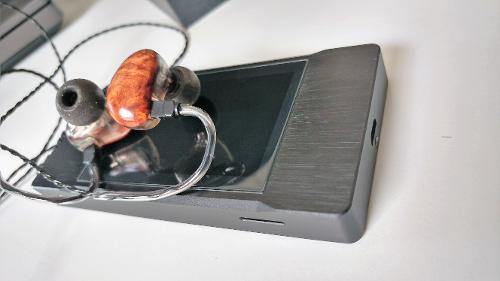






 ....
....

































